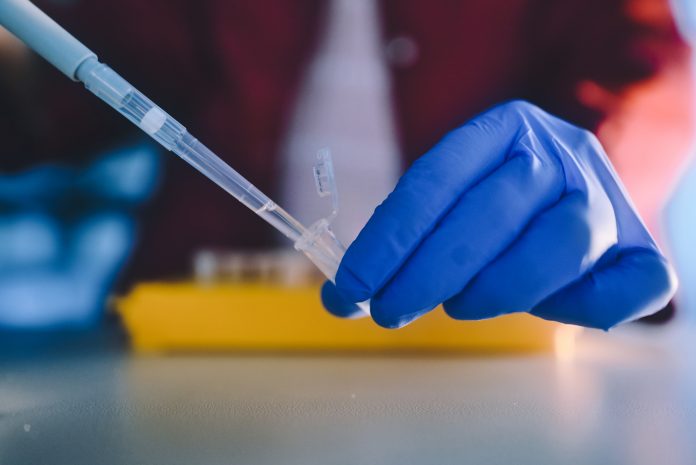Here, the International Agency for Research on Cancer and other experts provide an in-depth analysis of cancer, the second leading cause of death after cardiovascular diseases plus the role of technology and innovation in the field
Every sixth death in the world is due to cancer, making it the second leading cause of death after cardiovascular diseases. (1) In the U.S., cancer is the second highest cause of deaths with the American Cancer Society estimating that 1,735,350 new cancer cases will be reported and 609,640 lives will be taken in 2018. (2) A similar outlook has been reported in Europe as well. Cancer is a disease that does not discriminate, it affects individuals alike across different geographical, social and financial settings. Even more importantly, it is anticipated that the numbers of cancers diagnosed in 2030 will be 80% higher than those diagnosed in 2005, due to a multitude of causes, ranging from an increasing and ageing population, to changes in lifestyle behaviours to complex genetic and environmental factors.
Therefore, the growing burden of cancer is a major public health threat which no healthcare system seems sufficiently prepared to tackle it alone because of its scale and complexity. Without careful planning by healthcare providers, national governments and international organisations, there is a risk that the rising number of cancer cases will overwhelm healthcare systems, compromising the quality of care available and crowding out the investments required to better prevent and treat the disease. As a result, besides being the cause of pain and despair to the affected individuals and their families, cancer also seems likely to remain a significant economic burden to society. Against this background of an intense weight of rising costs and societal impact, biomedical research has been ever-expanding the understanding for the molecular basis of the more than 200 unique diseases collectively called cancer. Combined with efforts to apply these insights to clinical care, biomedical research is forming the foundation of an era of personalised medicine that promises to improve cancer treatment.
In recent decades, clinical care for cancer has witnessed major improvements in the speed and accuracy of diagnostic procedures: the effectiveness of surgical procedures, radiation therapy and medical treatments (e.g. new conventional drugs and immunotherapy); and the development of multidisciplinary approaches to care. However, the rate of scientific knowledge production has not been matched as yet by the rate of adoption of new public health interventions or clinical treatments on the frontline of patient care. The scale of the global cancer control problem demands that we consider new paradigms to accelerate our rate of learning, discovery and innovation. Here, we present three areas where innovation seems both necessary and inevitable in relation to cancer care.
Information sharing, translating and integrating
The development of the internet, rapid communication and digital imaging technologies affect both the patients (able to access their electronic records), as well as the research community (able to access unprecedented volumes of data from across the world). A scalable such example comes from China, where due to the increasing demand in public health, China has applied many innovative approaches in order to cope with its large population. Patients and their families can have real-time access to online appointments, payments, ward access, and their medical records (including images, pathology reports, and clinician’s comments). (3) The growing expectation is that by creating a framework of governing and access for this information (4), healthcare systems and nations are setting a foundation of open science, whereby scientific datasets are treated as global assets in the fight against disease and can be inclusive of scientists, clinicians and patients alike. Furthermore, the rapid, global technological access offers the opportunity for the democratisation of innovative approaches dedicated to cancer prevention and treatment, allowing for their quicker uptake and adoption of such innovations from highly developed healthcare systems into resource-restricted settings. However, the rapid pace of knowledge production taking place within cancer research calls for increased capability to translate these research results into applicable solutions, and integrate them into healthcare practices. Thus, connectivity can truly become the enabler of continuous learning and innovation, so that lessons learned from each patient treated can inform clinical decision making for the next patient.
Accounting for complexity
This fast-paced research environment presents a real challenge to clinical care, as from a clinical viewpoint, translating this knowledge into practising healthcare is becoming progressively more complex. In addition, the already available diagnostic tests and treatment options mean that in some cases cancer patients can be identified much earlier than before, treated successfully, and then followed-up for a number of months or years. This increased horizon of healthcare system interactions with patients multiplies the volumes and the complexity of data acquired for every single patient. Yet the current tools to measure the cost and value of advances in care (e.g. cost-effectiveness analysis and, in particular, health technology assessments) are not optimised for complex healthcare systems moving toward personalised, patient-centred care. Innovative approaches are needed to drive the creation of new targeted technologies and processes to simulate this level of complexity. The latter is already being explored with artificial intelligence-enabled approaches, a trend that is likely to continue at pace at least within large healthcare centres where information infrastructures are extant.
New technologies, new professions
It is thus apparent that future progress in cancer research, prevention and treatment will require highly trained specialists from a broadening spectrum of disciplines. However, current predictions are incomplete regarding the future workforce-related needs, for example, the size and discipline composition of such a future workforce. The challenge is that while healthcare, public health policies and associated economic resources may change relatively rapidly, the education and training of scientists, clinicians and other professionals will take significantly longer. For example, current medical education focuses on the teaching and learning of clinical reasoning, critical thinking and appraisal, together with the acquisition of expertise. Increasingly, training in soft skills, such as communication and empathy are also included. Creativity and innovation require divergent and lateral thinking; these are difficult to be taught in the traditional clinical environment. Thus a robust discussion needs to take place on how the educational environment can become more amenable towards innovation through dedicated training programmes. (5)
In conclusion, the scale of the global cancer challenge necessitates that healthcare adapts to the rapid pace of technological change in pursuing effective research that brings impactful solutions to the benefit of patients with cancer worldwide. (6) Especially as emerging scientific discoveries and clinical innovations hold the potential to dramatically improve patient care, and may ultimately help reconcile the tension of rising costs. This, in turn, will benefit everyone’s ultimate goal of transforming cancer from a deadly disease into a chronic disease and potentially even finding a cure for cancer.
Disclaimer
Where authors are identified as personnel of the International Agency for Research on Cancer/WHO, the authors alone are responsible for the views expressed in this article and they do not necessarily represent the decisions, policy or views of the International Agency for Research on Cancer/WHO.
References
- Naghavi M, Abajobir AA, Abbafati C, et al. Global, regional, and national age-sex specific mortality for 264 causes of death, 1980–2016: a systematic analysis for the Global Burden of Disease Study 2016. Lancet. 2017;390:1151–1210. doi:10.1016/S0140-6736(17)32152-9.
- Siegel RL, Miller KD, Jemal A. Cancer statistics, 2018. CA Cancer J Clin. 2018;68:7–30.
- Hsu J, et al. Top Chinese Mobile Health Apps: A Systematic Investigation. J Med Internet Res. 2016; 18(8): e222–e222.
- Wilkinson MD, Dumontier M, Aalbersberg IJ, et al. The FAIR Guiding Principles for scientific data management and stewardship. Sci Data. 2016; 3: 160018.
- Heng-Wai Yuen & Abhilash Balakrishnan (2019) Next stop – teaching creativity and innovation in medical education, Medical Teacher, 41:1, 116-117.
- Jaffray DA and Alleyne G. (2018) Research and innovation in global cancer control. The Lancet Global Health; 6: S1-S2.











